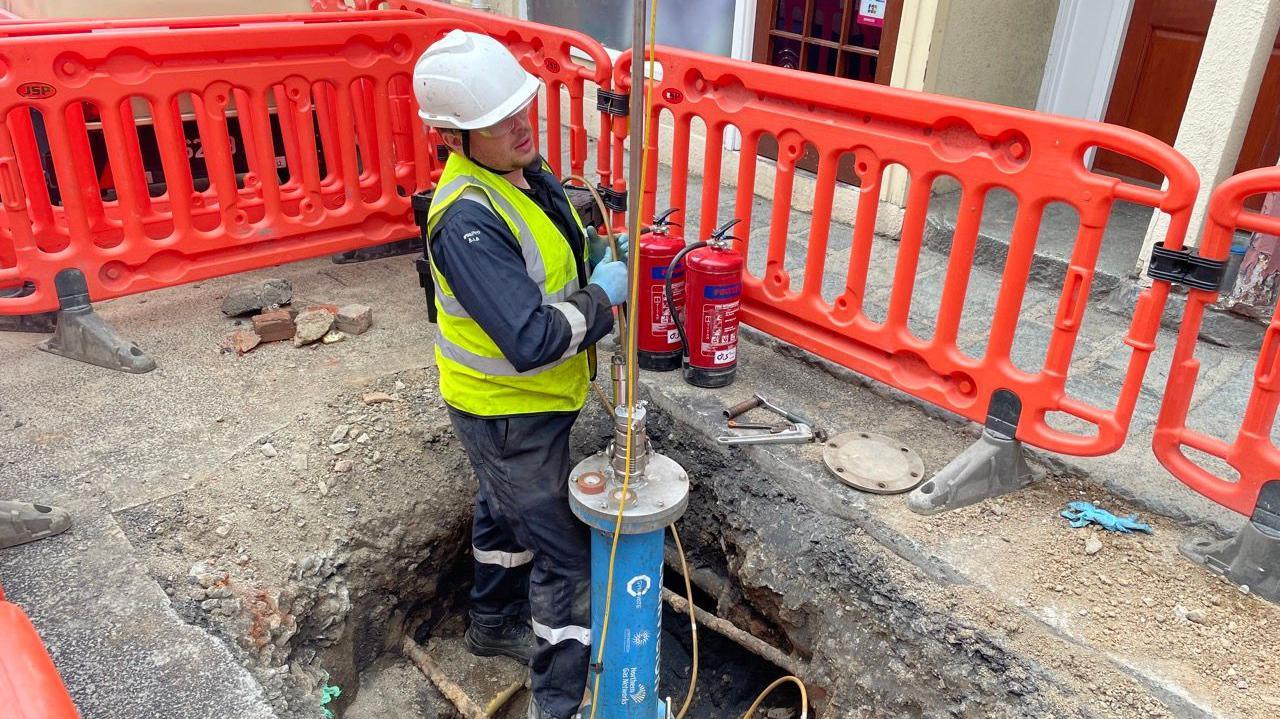New repair technique aims to minimise disruption

The technique, called STASS, was used for the first time in the Channel Islands
- Published
Guernsey Energy has trialled a new technique to recondition gas pipes while carrying out recent network maintenance work in Vauvert.
The technique, called STASS (System Two Assess Survey and Seal), uses a sealant to internally repair joints on metallic mains.
It can minimise the need to dig up roads and cause traffic disruption and has been used for the first time in the Channel Islands, Guernsey Energy said.
STASS involves sending a robot with a camera into the gas main where it would travel up to 125m (410ft) through a pipe.
The robot logs any joint it comes across as well as plugs and service connections and is equipped with a spraying head to recondition the pipes.
Due to the size of the robot, the technique can only be used in pipes with a diameter of at least 12in (30cm).
On the Vauvert project 39 joints were resealed across more than 200m (650ft) of pipe, Guernsey Energy said.
It added the traditional way of reconditioning the pipes would have led to 39 excavations but by using STASS it was able to recondition the main from one access pit.
Darryl Goddard, managing director at Guernsey Energy, said: "We are very excited about the introduction of STASS, which following this successful trial will become the number one method used to recondition pipes of the right size.
"Using this new technique ensures that essential maintenance will be completed as quickly as possible.
"This ingenious technology will not only minimise the amount of disruption for our community, but also benefit the environment and prove to be a more economical option, aligning with our net zero journey as a business."
Follow BBC Guernsey on X (formerly Twitter), external and Facebook, external. Send your story ideas to channel.islands@bbc.co.uk, external.